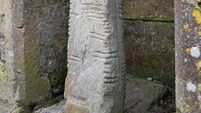Ministerial review won’t help 33 schools set to lose teachers
The estimated 428 teacher jobs the Department of Education planned to remove from 270 primary and 163 second-level schools are mostly in schools in its DEIS scheme (Delivering Equality of Opportunity In Schools) established in 2005, but some are outside it. The information provided to the Irish Examiner shows that 17 of the 270 primary schools affected are non-DEIS. A report being prepared for Mr Quinn on the impact of the cuts is only looking at primary schools in the urban categories of DEIS.
A further 16 DEIS rural schools are also shown to be in line to lose posts, but they too are outside the scope of the review, due with the minister in about a fortnight. There are more than 300 primary schools in the DEIS support programme for rural schools, which suffered the loss of almost 50 teachers working directly with pupils’ families last September.













